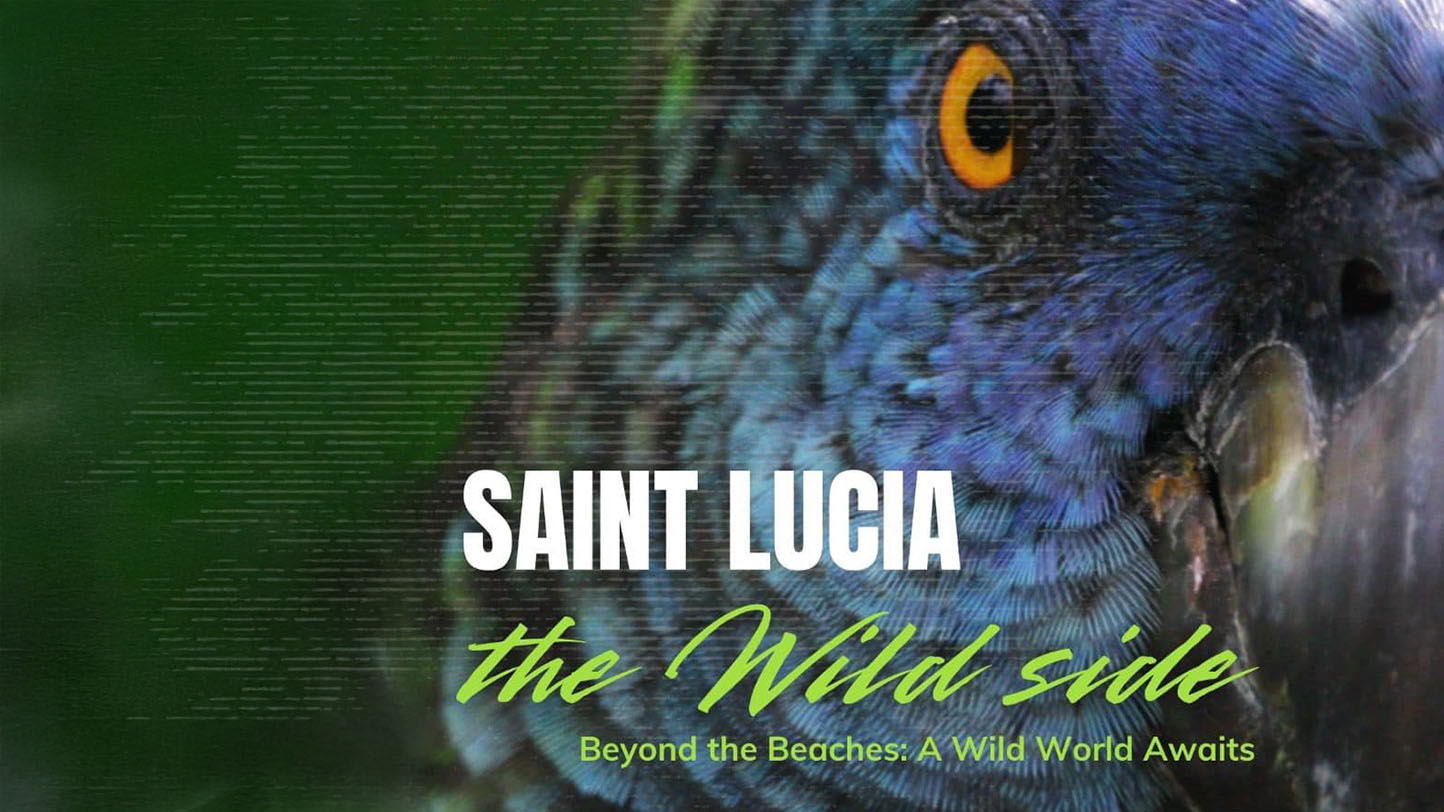OECS Director General Reviews the Wild Side: The Movie
OECS Press Release
Environmental history was made this month with the airing of Saint Lucia: The Wild Side the island's first feature-length wildlife documentary, showcasing St. Lucia's landscapes and wildlife. Produced by Kendal John with his brother Lyndon John – as conservation biologist – as co-producer.
I sat with anticipation at Caribbean Cinemas with a mixed audience of environmentalists, curious folk, children, and families. Opening scene – the heart-stirring sounds of the Saint Lucia national anthem played by violin with the background sounds of crickets start the documentary. Flashing images of stunning landscapes of rock 758.
The movie then moves from the geographic and touristic picturesque to what lies beneath the beauty. A small island with an almost invisible population of the richest biodiversity beyond the casual eye. Foreigners viewing this film will be amazed at the breadth of that natural bounty. But we who are born here and have lived here all our lives have left this viewing with a sense of awe and a reverent respect for the many lifeforms that coexist with us – some of which can be found nowhere else on this planet.
This movie by the John brothers is a world class presentation of that biodiverse reality in which we live that we are hardly conscious of and of which we have little formal knowledge. The movie Saint Lucia – The Wild Side is a gripping, thrilling, educational and deeply emotional experience. Yes, it is about our country – the land of our birth, all over which we have limed, hiked, driven and which we are proud to show off to visitors. But this movie presents it to us with such clarity, saying so much that we knew nothing about, with such stunning photography that we will leave the cinema feeling that we have met a Saint Lucia whose bounty and beauty we never truly knew.
It is the kind of feeling that the famous English poet T.S. Eliot described when he wrote: “We shall not cease from exploration, and the end of all our exploring will be to arrive where we started and know the place for the first time.”
We are taken on this journey of exploration and discovery from ridge to reef – from Mt Gimie our tallest mountain to the near shore reefs and the waters beyond to be introduced to a bewildering array of “others” with whom we share this land and sea but about whom we know so little.
Every introduction is an explanation of the intricacy of the creative hand of God – “for by him all things were created, in heaven and on Earth, visible and invisible…” and “in his hand are the deep places of the earth; the heights of the hills are his also”.
The photography is unbelievably stunning, capturing things that we could never have seen, and the narrative is patient and comprehensive – explaining the logic of the biodiversity and how every feature and characteristic serves its purpose. We are not just introduced to these wondrous creatures, but the movie explains how their adaptation to the environment is facilitated by everything else in a delicate balance of survival. It is a powerful tribute to the producers that they have been able to present footage of rare animals in scenes that could never have been caught by a passing photographer. We are taken into their hidden world in the bosom of our forests. This is world-class, National Geographic footage!
At the Sunday night viewing, there were several primary school level children attending and their reaction to the film was fascinating – they were reacting with amazement at some things, and with awe to the power of adaptation in Nature.
In many subtle ways, the film also pays tribute to our ancestors because every creature identified is also called by its kwéyòl name. Whether consciously or not, the film succeeds in making the point that our ancestors were in better tune with nature than we have been because even the most “exotic” of the creatures have kwéyòl names.
Indirectly, the film directors affirm the tribute that Derek Walcott made to our ancestors when he affirmed that “we were blessed with a virginal, unpainted, world with Adam’s task of giving things their name.”
Another special touch of recognition was the identification of the constellation of environmental champions who have fought the early battles to bring us to this stage of collective commitment to Nature.
This is a movie that needs to be seen by everyone and most of all by every student from primary to tertiary level. And I encourage the producers to consider working with counterpart creatives in the entire OECS so that we have a series of such documentaries. If it is true that a picture is worth a thousand words, then a series of such documentaries is worth more than a thousand conferences. We are publicly inviting the producers to work with the OECS Commission to ensure that there is a special screening of Saint Lucia – The Wild Side at the next major international conference on biodiversity. But before that, this must be seen across the entire OECS by all school children, by all communities. And would it be too much to ask that it be seen not just in English but also in French and in kwéyòl?
Danny Moonie
OECS Communications Unit
